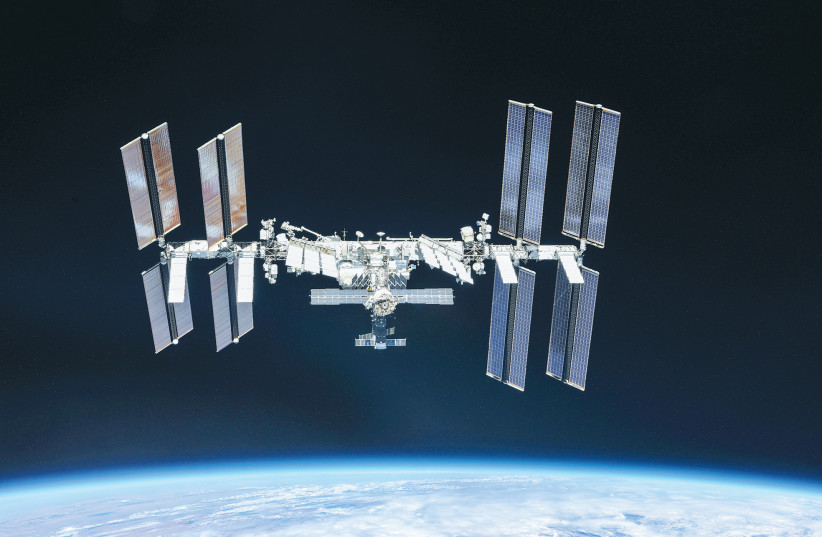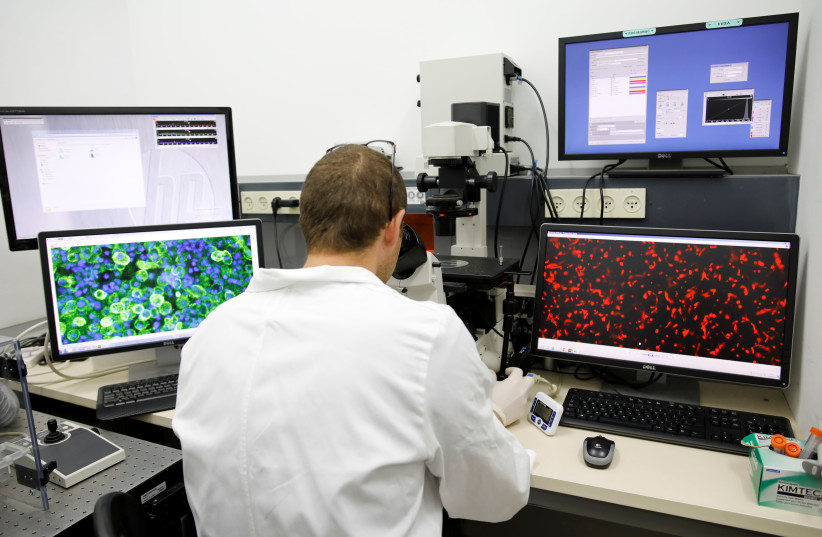Scientists conduct biotech research in space - study
Microgravity conditions in space allow the study of disease progression and the aging process more quickly than it can be done on Earth.

The International Space Station photographed by Expedition 56 crew members from a Soyuz spacecraft after undocking in 2018. (photo credit: NASA/Roscosmos/Handout via REUTERS)
According to researchers at Cedars-Sinai Medical Center in Los Angeles, the future of biotechnology may be in space.
The research, which was published in the peer-reviewed journal Stem Cell Reports
last Thursday, shows that the low-gravity conditions of space present
an unprecedented opportunity for the development of advanced medical
technologies.
The
microgravity conditions experienced by astronauts gradually accelerate
aging and muscle and bone degradation. Scientists can therefore use
these conditions to simulate models of disease progression and even the
aging process far more quickly than they could by observing these
processes on Earth.
These
conditions may also be useful for the mass production of stem cells and
for 3D printing of biological tissues, as the lack of gravity makes it
easier to use low-viscosity materials. "The processes involved in
biofabrication are heavily reliant on biomechanical cues that are
affected by gravity," they said, "and microgravity conditions should
enable full control over these cues in ways not possible on Earth."
The International Space Station is
hosting relevant experiments to promote cutting-edge research in the
microgravity environment. Meanwhile, biotech companies are developing
satellites and vehicles for use in this area of research.

A
laboratory technician looks through a microscope during a demonstration
showing the 3D printing of what Israeli scientists from Tel Aviv
University say is the world’s first 3D-printed, vascularised engineered
heart, at a laboratory in the university, Tel Aviv, Israel April 15,
2019 (credit: REUTERS/AMIR COHEN)
The Cedars-Sinai scientists are anticipating that space will be the frontier of a revolution in medical technology.
"While
we are still in the exploratory phase of some of this research, this is
no longer in the realm of science fiction," said Arun Sharma, PhD,
study co-author and head of a research laboratory at the Cedars-Sinai
Board of Governors Regenerative Medicine Institute, Smidt Heart
Institute and Department of Biomedical Sciences.
"Within
the next five years we may see a scenario where we find cells or
tissues that can be made in a way that is simply not possible here on
Earth," he said. "And I think that’s extremely exciting."


No comments:
Post a Comment